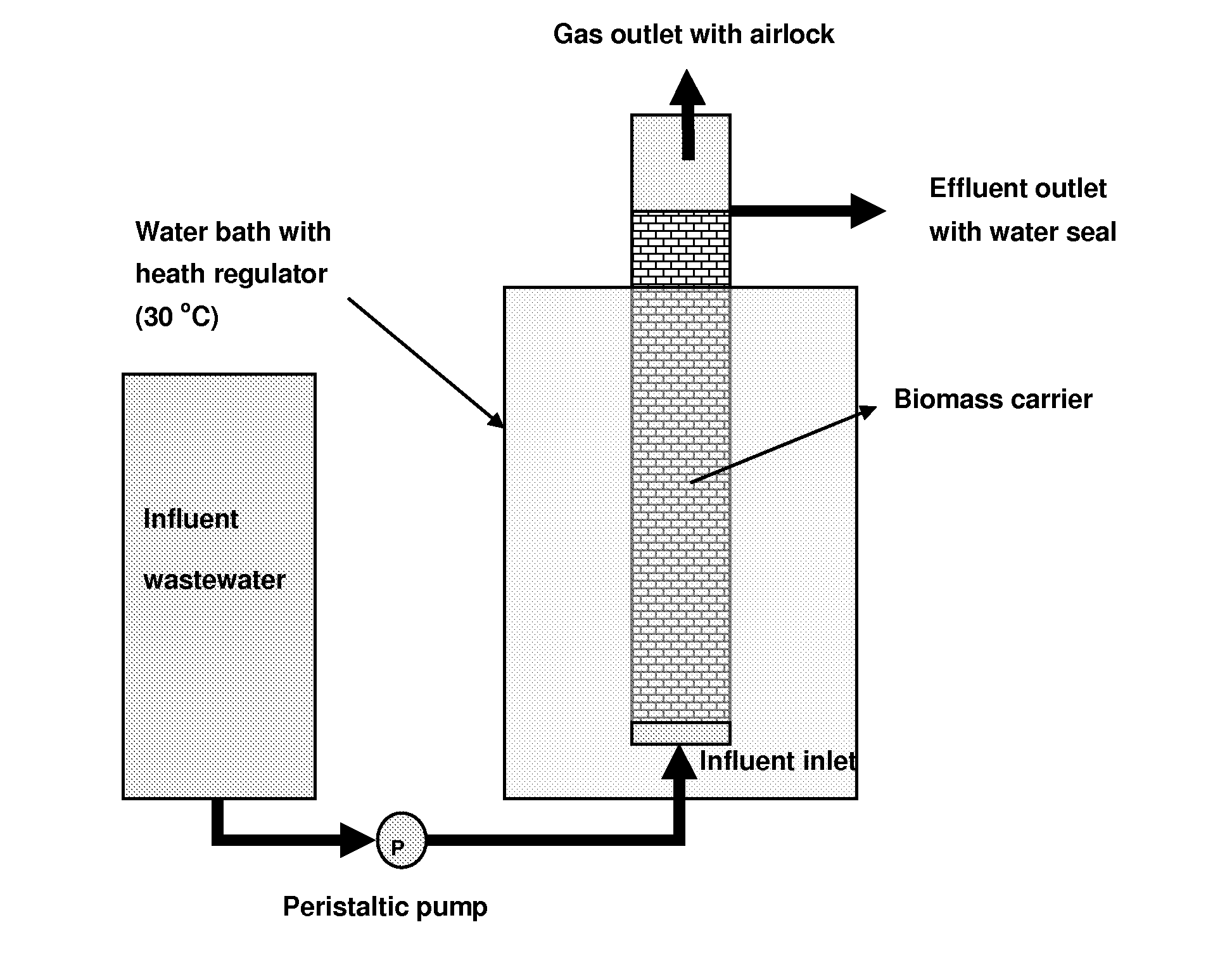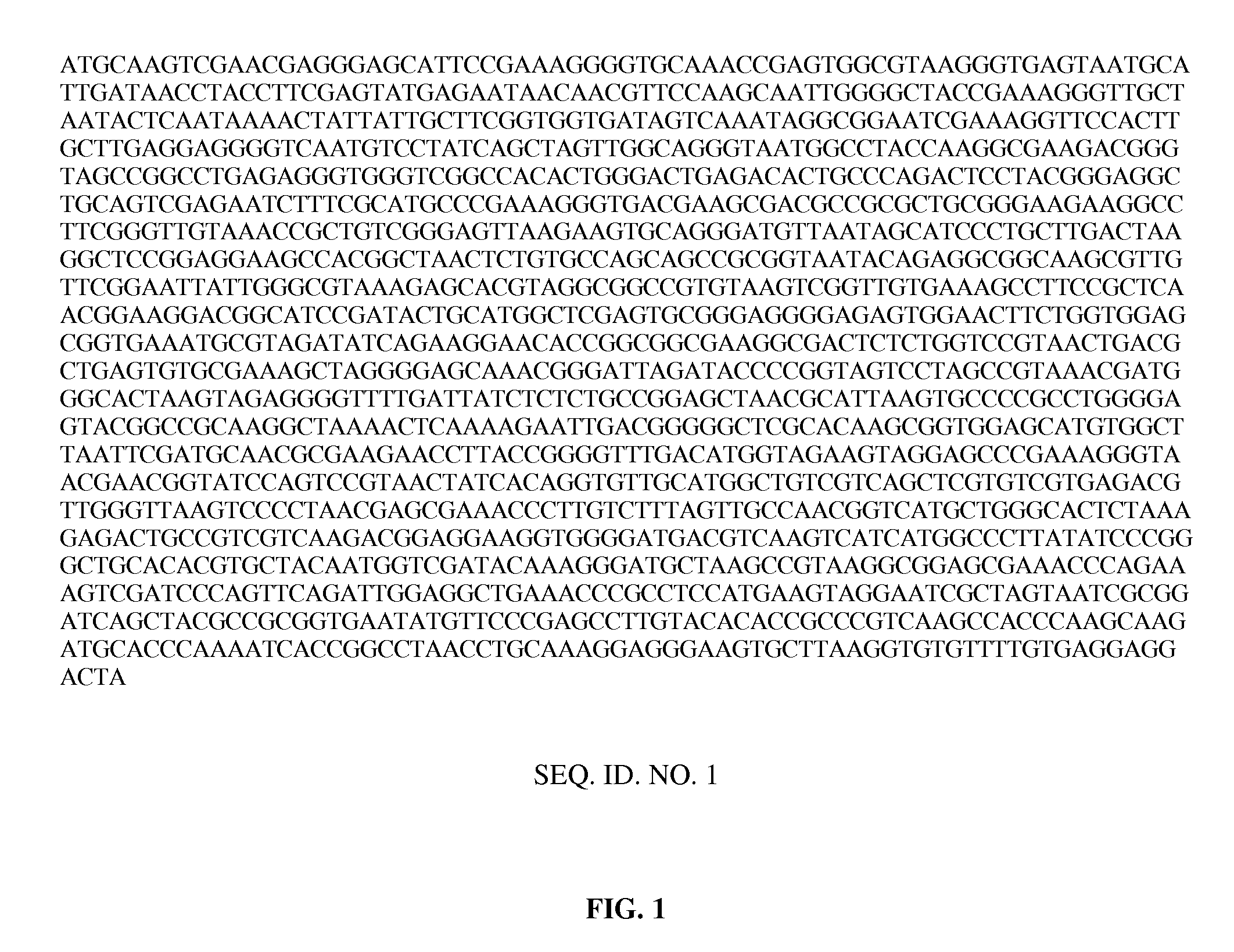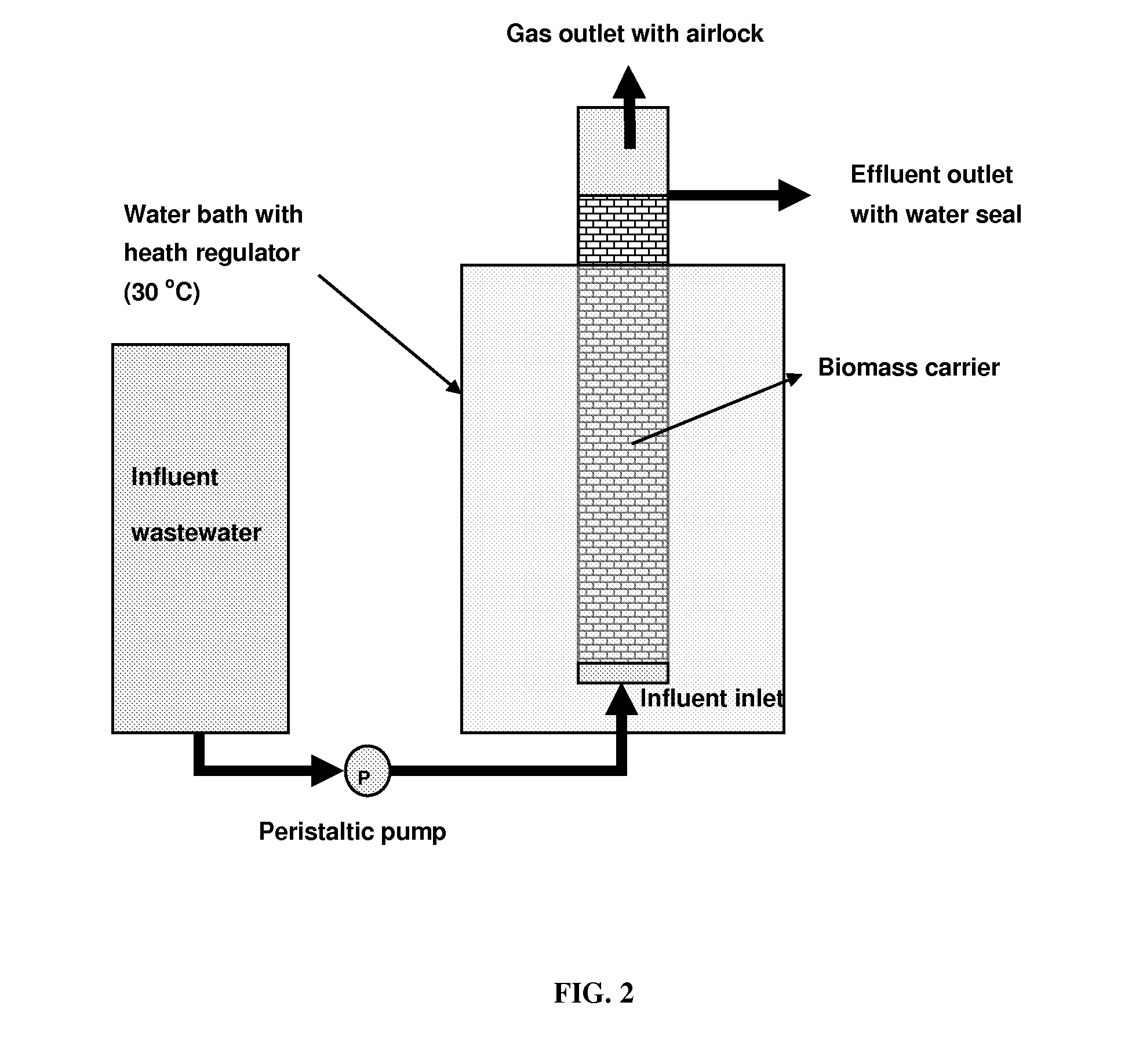Novel Anammox Bacterium Isolate
a bacterium and strain technology, applied in the field of new bacterial strains, can solve the problems of large amount of oxygen and energy, limited cost of conventional biological n removal methods, and inability to grow for approximately two weeks, and achieve the effect of reducing ammonia levels
- Summary
- Abstract
- Description
- Claims
- Application Information
AI Technical Summary
Benefits of technology
Problems solved by technology
Method used
Image
Examples
example 1
Anammox Enrichment
[0044]In the first trial, the anammox reaction was first noticeable at day 490 with simultaneous removal of NO2− and NH4+. At the same time, a distinct red biomass growth, which is typical of the anammox planctomycetes bacteria, colonized the PVA hydrogel biomass carrier beads. These developments occurred only when high N (>200 mg / L) and adequate salt strength was used in the synthetic media. Under the conditions and protocol determined in trial one, it took about 100 days in trial two to develop the anammox reaction from sludges obtained from swine farms in USA. Nitrogen removal rates obtained during first-phase development were 0.4 to 0.5 kg N / m3 / day, which are already in the range of industrial bio-treatment applications. These rates compare to reported removal rates for conventional nitrification / denitrification for industrial applications (e.g. treatment of effluents from anaerobic digestors, rendering plants or landfill leachate). Removal of NO2− and NH4+ in ...
example 2
Pilot Reactor
[0045]Removal of NO2− and NH4+ at typical stoichiometric ratios of the anammox reaction occurred from day 1 of operation of the pilot reactor seeded with the enriched anammox sludge generated in the previous trials. Nitrogen removal rates increased quickly with time in the pilot reactor seeded with the anammox enriched sludge (FIG. 3). Nitrogen removal rate increased linearly from 0 to 600 mg N / L-reactor / day in the first 4 months of operation (rate increase 4.8 mg N / L / day per day; R2=0.92). The total N removal rates up to about 1830 mg N / L-reactor / day (1.8 kg N / m3 / day) were obtained. Removal of NO2− and NH4+ was simultaneous at the stoichiometric ratios summarized as NH4++1.30 NO2−→1.06 N2+0.18 NO3−. These ratios were obtained during operation of the reactor shown in FIG. 3 from the linear relationships between total N removal per unit of ammonia N removal (2.12 or 1.06 N2), nitrite N removal per unit of ammonia N removal (1.30), and nitrate N produced per unit of ammon...
example 3
Preservation and Reactivation of Procedures for NRRL B-50286
[0048]In order to demonstrate that strain NRRL B-50286 can survive various preservation techniques, strain NRRL B-50286 was subjected to a four month preservation period that included refrigeration in nitrate media at 4° C., lyophilization in skim milk media with strain pre-frozen at −60° C., lyophilization in skim milk media with samples pre-frozen using liquid nitrogen (−200° C.). Following the preservation period, the strain was reactivated and tested for anammox activity with the bioreactor as disclosed in Example 2.
[0049]For refrigerated samples, 10 g of biomass from the pilot anammox reactor was placed in 50-mL glass screw cap centrifuge tubes (Corning Inc., Corning, N.Y.) and the remaining headspace in the tube was filled with N2-bubbled nitrate solution (KNO3, 80 mg L−1). Caps with silicon septa were used to anaerobically seal the centrifuge tubes, and the media was replaced monthly, according to published anammox p...
PUM
 Login to View More
Login to View More Abstract
Description
Claims
Application Information
 Login to View More
Login to View More - R&D
- Intellectual Property
- Life Sciences
- Materials
- Tech Scout
- Unparalleled Data Quality
- Higher Quality Content
- 60% Fewer Hallucinations
Browse by: Latest US Patents, China's latest patents, Technical Efficacy Thesaurus, Application Domain, Technology Topic, Popular Technical Reports.
© 2025 PatSnap. All rights reserved.Legal|Privacy policy|Modern Slavery Act Transparency Statement|Sitemap|About US| Contact US: help@patsnap.com



